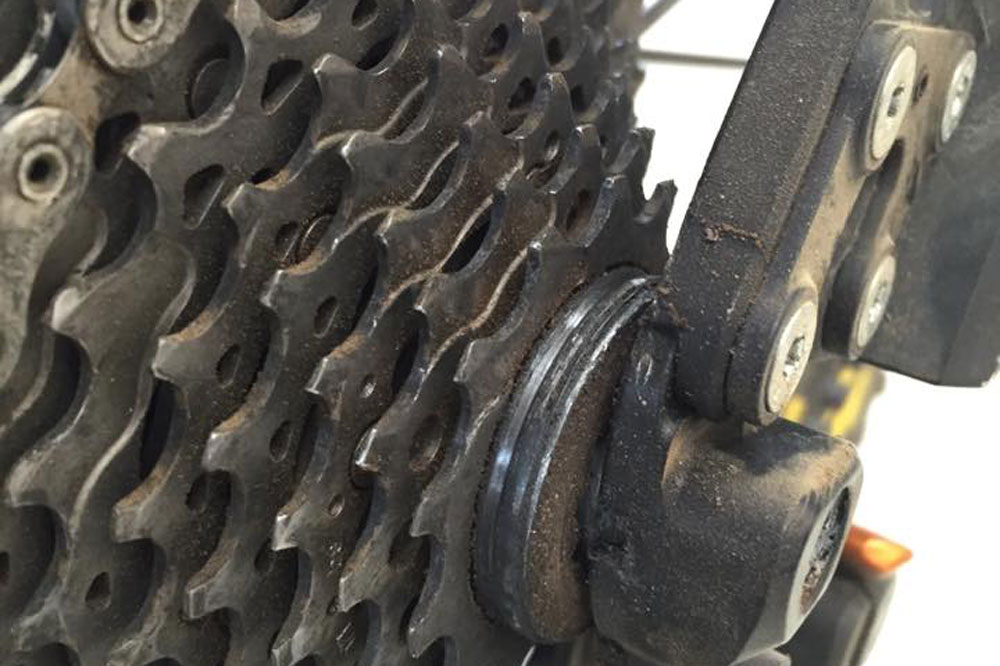Why? Bike suspension works better without chain forces.
New idea from Canyon offers on-the-fly freehub disengagement.
A prototype on display at Eurobike shows a bar-mounted lever with a cable running to a special rear hub. When you operate the lever, the rear wheel’s freehub disengages (kinda like when your freewheel freezes up or stops working and you can freewheel both ways).
Watch: Aaron Gwin wins Leogang chainless
But why?
Remember Aaron Gwin and Neko Mullaly’s chainless runs? Remember apocryphal stories of Orange 224 bikes posting faster times down Fort William with snapped chains?
Pedal feedback is what we’re talking about here. Or, how the chain affects the rear suspension during compression.
Basically, chains impair rear suspension from working freely. Almost all rear suspension designs have the rear wheel moving backwards (to a greater or lesser degree) throughout the suspension travel.
Axle path versus chain forces
Rearward trajectory axle paths are – in theory – actually really good for absorbing bumps (all forks have a rearward trajectory). Having a wheel that moves backwards-and-upwards stops the suspension ‘hooking up’, especially on square/lipped objects.
But the problem is the length of chain running between the rear wheel and the front triangle.
The chain ‘connecting’ the rear wheel to the front triangle prevents this rearward wheel movement from happening freely. The rear wheel can’t freely move backwards because there’s a fixed length of rigid steel chain constraining it from doing so.
With this new Disconnect system, Canyon are effectively removing the chain pulling/restricting forces from the suspension behaviour. When Disconnect is used the rear suspension is unimpeded by the chain. It can move freely.
How it would work on the trails
So the general idea is that for most the downhill race run the freehub would be engaged and the rider can pedal. But when they get to a section where they don’t have to pedal for a bit they can press the Disconnect lever and have a better functioning rear suspension.
The key things are going to be reliability, weight and the rider remembering to re-engage the freehub when it’s time to pedal again.
Chris Porter’s DIY version

As is usually the case with anything suspension, Mojo’s Chris Porter has already been here. Porter has been investigating ways of removing chain forces from the suspension action.
Porter’s simple but effective idea was to machine down an 11t sprocket that still has a ridge for the chain rollers to sit on and locate.
Watch: Chris Porter’s cunning sprocket spacer in action
There are pros and cons to this concept. The pros are that it’s cheaper, lighter and works with any frame. The main cons are that you have to stick the rear mech in bottom gear to get the ‘disengagement’ and you’re at the tough end of the gear range when it comes to getting back pedalling again.
Porter says: “As a proof of concept it was a corker! For DH racing it’s perfect ‘cos you have such a small spread of gears anyway and with 7 spd blocks you could just add an extra neutral without losing range… It was better when the trail gets fast. On slow pumping and popping stuff it lacked the drive of the chain – faster though!”




